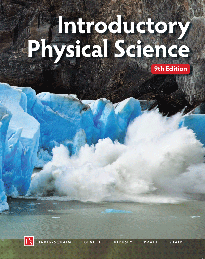 IPS Film "Loops"
IPS Film "Loops"
DVD or VHS Format
 For teachers who are not familiar with the "Loops," a few words of explanation may be in order. When the IPS "Super-8" film loops were first produced about 40 years ago, the four-minute time constraint challenged the ingenuity of the IPS Group. In four minutes all the essential parts of every demonstration had to be shown, data had to be collected, and, in some cases, graphed to arrive at conclusions. The equipment had to be simple to encourage teachers and students to do the demonstrations themselves.
For teachers who are not familiar with the "Loops," a few words of explanation may be in order. When the IPS "Super-8" film loops were first produced about 40 years ago, the four-minute time constraint challenged the ingenuity of the IPS Group. In four minutes all the essential parts of every demonstration had to be shown, data had to be collected, and, in some cases, graphed to arrive at conclusions. The equipment had to be simple to encourage teachers and students to do the demonstrations themselves.
The result was a collection of film loops unsurpassed in clarity and conciseness even in this age of computer-interfaced demonstrations. Far from being a disadvantage, the absence of sound lets teachers add their own comments or questions as they see fit.
Contents:
- Radioactive Substances I Shows how Figure 7.2 in the 6th, 7th, 8th, and 9th Editions is produced from Figure 7.1. It also checks the same six substances with a Geiger counter.
- Radioactive Substances II Shows the construction and operation of a diffusion cloud chamber, as depicted in Chapter 7 in the 6th, 7th, 8th, and 9th Editions.
- Motion of Electric Charges in Vacuum Takes apart a diode and demonstrates under what conditions a current will flow through the diode for Chapter 12 in the 6th Edition.
- Molecular Motion and Diffusion A most convincing demonstration of how differently a drop of bromine evaporates in the presence of air and in a vacuum as illustrated in the 9th Edition Figures 9.1 and 9.2.
- A Sphere-Gas Machine Shows qualitatively the relation between volume and pressure, and between volume and temperature for a "gas" made of small steel spheres. The sphere gas machine was used for several figures in the 9th Edition.
- How Does the Thermal Expansion of Gases Compare? The thermal expansion of equal volumes of three gases is simultaneously observed over the same temperature range. The readings for all three gases are shown to lie on the same curve as illustrated in Figure 9.18 in the 9th Edition.
- How Does the Thermal Expansion of Liquids Compare? The thermal expansion of equal volumes of three liquids is simultaneously observed over the same temperature range. The readings for the three liquids are shown to lie on different curves. This experiment is from the 5th Edition but is a nice enrichment for the 9th Edition when compared to Loop #6.
- A Disk Gas (An Analog) Introduces the operation of a unique "puck table" on which the floating pucks are kept in motion by vibrating pucks on the boundary, providing a much better analog than other puck tables to a real gas in a container.
- The Distribution of Speeds in a Mixture of Disk Gases Measures the distribution of speeds of a mixture of pucks representing two gases of different molecular mass at the same "temperature." The lighter pucks are shown to have a higher average speed.
- How does the Effusion Time of Gases Compare? Compares the effusion time of equal volumes of carbon dioxide and hydrogen and raises the question of the relation between these times and the molecular masses of the two gases.
Loops 8-10 are from the 5th Edition, but will enrich any course addressing the kinetic molecular theory of gases.
Price and Ordering Information
Available: Now

The new 9th Edition of Introductory Physical Science (IPS) continues the IPS tradition of guiding students to knowledge of physical science and the way scientific knowledge is acquired.
Inspect the table of contents and more details on our new edition of IPS.
